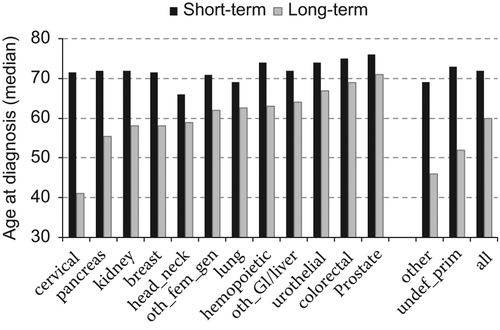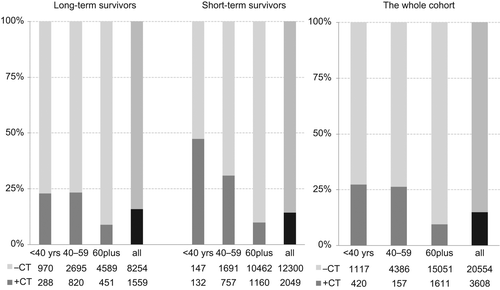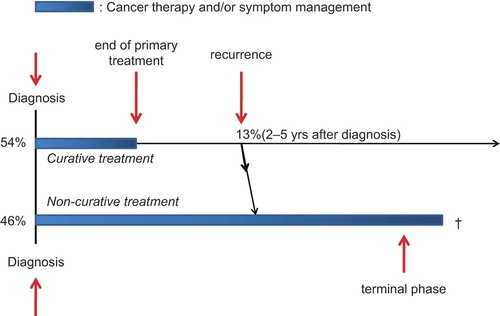Figures & data
Table I. Proportions (%) of long- and short-term cancer survivors, in three age intervals, and according to the most frequent cancer types.
Table II. Median age at the time of the cancer diagnosis for long- and short-term survivors, 2- and 5-years crude survival, and percentages of short-term survivors, who died less than 2 years after TOCD.
Figure 1. Age at the time of the cancer diagnosis for long- and short-term survivors.
Oth-fem-gen, other female genital; oth_GI/liver, gastrointestinal cancer other than colorectal cancer; undef_prim, undefined primary cancers.

Figure 2. The proportions of patients receiving chemotherapy (CT) according to survivor status and in three different age categories.

Figure 3. Two generic trajectories for cancer care to enter for newly diagnosed cancer patients. The model of two generic trajectories for cancer care, with the numbers from our cohort applied. At the time of the cancer diagnosis, 54% (cohort’s 2-years survival) of the patients would enter the “rehabilitation trajectory” and 46% (100–2-years survival) the “palliative care” trajectory. Within 2–5 years, 13% (2–5 year survival) of patients would then have to move from the rehabilitation to the palliative care trajectory, most likely due to recurrence. Rehabilitation programs should target patients in the upper trajectory. Palliative care initiatives, either alone or concomitant with cancer treatment, should target patients in the lower trajectory.

